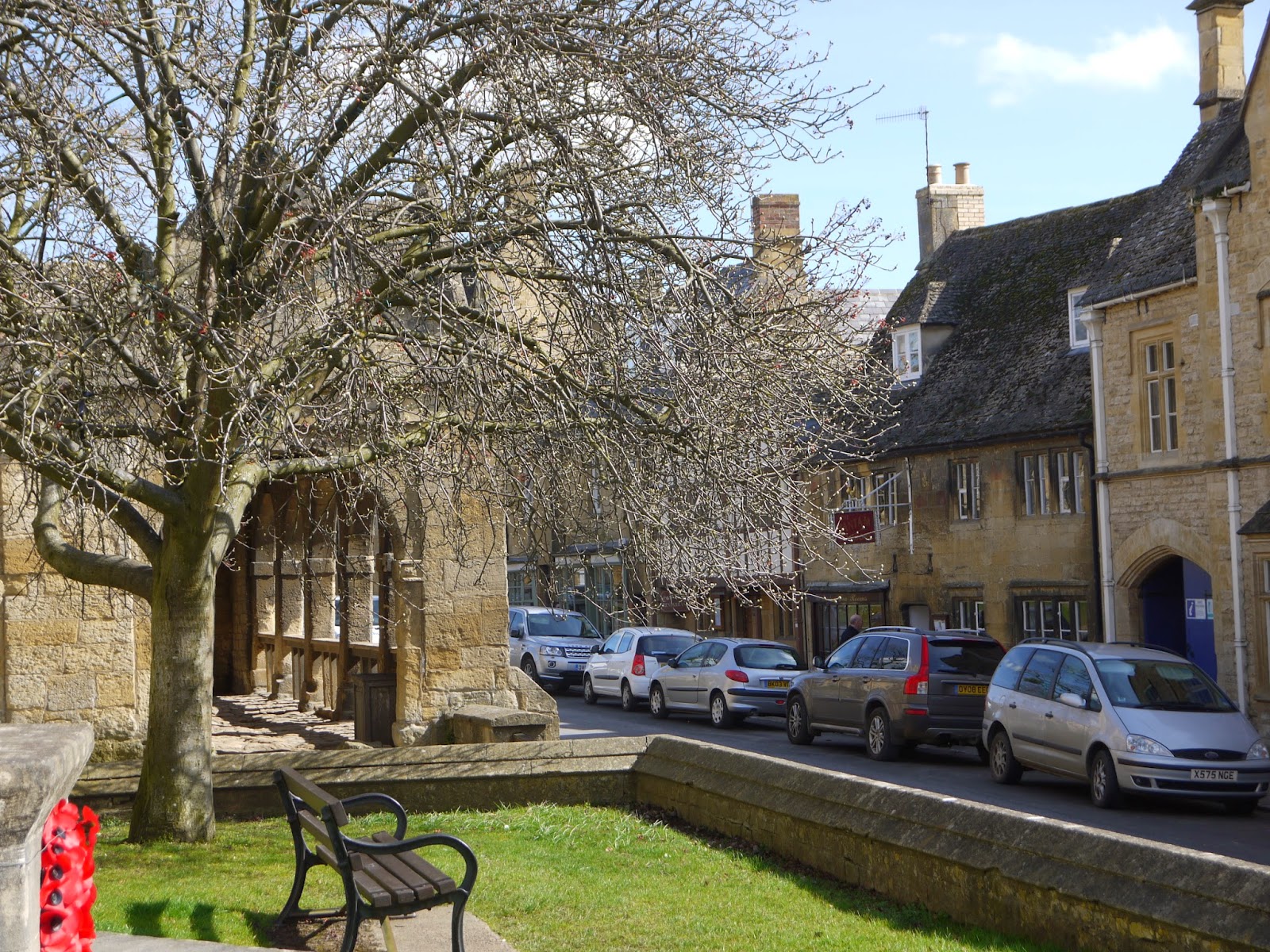After a week in London and a week in Kent, which is southeast of London, we headed for Shakespeare's home town, Stratford Upon Avon, in Warwickshire. Initially, we were planning to spend this third week in the Cotswolds, but decided to actually stay in Stratford to make it easier to go the Royal Shakespeare Company to see the two plays that they are performing during our stay, which are Henry IV, Part I and Part II. Shakespeare doesn't get much better than the RSC. Since we were here last, close to twenty years ago, the RSC has rebuilt the theatre and now it is a thrust stage which works very well.
The rows are steeply raked, allowing everyone to have good sight lines. On a rainy day this week, we returned to take the tour of the building. Our timing was a bit off (we had not checked the schedule) and therefore, we missed the last tour of the day by 15 minutes. Since the building is open for people to walk around by themselves, we took advantage of that and went to see the costumes that were out on display.
Some of them were just amazing, especially for the detail.
We've been going to more National Trust properties like this one: Charlecote (pronounced "sharlcut").
It has lovely gardens that are being re-instated. A lot of the gardens of these old homes have been dismantled over time because tastes change and flower gardens were not always in vogue.
This house, in sharp contrast to many houses, was wonderfully and lavishly furnished. Here's a peek at the dining room and one of the sitting rooms.
Larry's favorite part of the estate was the carriage collection.
This was a wonderful house, just chock full of things. The kitchens were massive and contained much of the equipment from the last family. The array of copper pots was something to behold.
Juxtaposed to Charlecote, was Croome Court, no doubt one of my favorites so far. While all of the properties that we have visited seem to be under some type of maintenance or restoration work, Croome is definitely a work in progress. The house has been stripped of most of its furniture, due to a series of owners, and the building is in great need of fixing up. The paint is peeling in most places, floors need to be stabilized, railings replaced, etc.
I just loved that we could see the "before" -- the condition that these great houses are in when acquired, when the last of the family finally has to sell the estate that they have owned for five or six hundred years. Often, the exterior (at least from a short distance) looks majestic and in good condition, but the interior is just dreadful. Here's the great hall of Croome in the "before" stage:
The Trust has done a great job of explaining what they plan to do and how they are going to accomplish it. It's positively unbelievable that the ceilings have held up in these old houses.
Another day, when it was raining, we altered our plan for an outdoor adventure and went instead to have lunch in a 600 year old pub. It started out as a house and became a pub a bit later, still several hundred years ago. The structure of the building was amazing. The beams holding up the ceiling were bowed to the point that they looked like they would split in another hour. All of the fireplaces were lit, providing the warmth for the building and welcome to the visitors.
Today we revisited a place that we saw in 1985 on my first trip to England. We went to Chedworth Roman Villa. Since our last visit, the Trust has done a lot more research to determine the actual size of the ruins and to uncover more of the mosaics that originally covered the floors. They have taken steps to more aggressively protect the exposed structures and they have trained their volunteer guides to give excellent presentations.
And then there are the quintessentially Cotswold villages, those of picture postcards and large format coffee table books, like Chipping Campden:
and Stow-on-the-Wold:
and this charming little village, Bilbury:
And also there are Burford, Moreton on the Marsh, and Fairford, and a few hundred others. Some are a mere bend in the road, some a quarter mile long, and some actually have traffic lights, roundabouts and a church. Almost all of them are photogenic in their own way.

























































